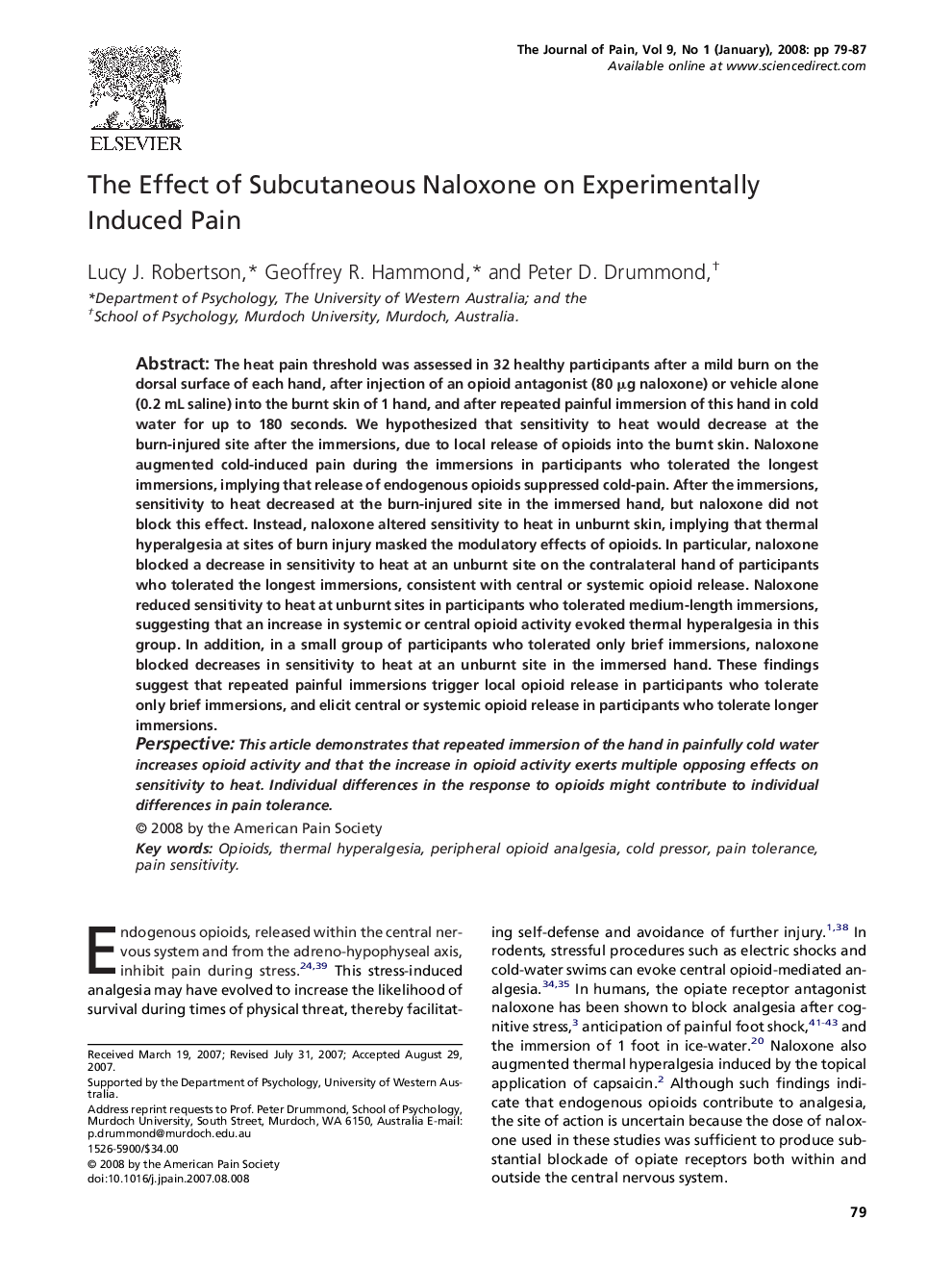| کد مقاله | کد نشریه | سال انتشار | مقاله انگلیسی | نسخه تمام متن |
|---|---|---|---|---|
| 2723678 | 1566832 | 2008 | 9 صفحه PDF | دانلود رایگان |

The heat pain threshold was assessed in 32 healthy participants after a mild burn on the dorsal surface of each hand, after injection of an opioid antagonist (80 μg naloxone) or vehicle alone (0.2 mL saline) into the burnt skin of 1 hand, and after repeated painful immersion of this hand in cold water for up to 180 seconds. We hypothesized that sensitivity to heat would decrease at the burn-injured site after the immersions, due to local release of opioids into the burnt skin. Naloxone augmented cold-induced pain during the immersions in participants who tolerated the longest immersions, implying that release of endogenous opioids suppressed cold-pain. After the immersions, sensitivity to heat decreased at the burn-injured site in the immersed hand, but naloxone did not block this effect. Instead, naloxone altered sensitivity to heat in unburnt skin, implying that thermal hyperalgesia at sites of burn injury masked the modulatory effects of opioids. In particular, naloxone blocked a decrease in sensitivity to heat at an unburnt site on the contralateral hand of participants who tolerated the longest immersions, consistent with central or systemic opioid release. Naloxone reduced sensitivity to heat at unburnt sites in participants who tolerated medium-length immersions, suggesting that an increase in systemic or central opioid activity evoked thermal hyperalgesia in this group. In addition, in a small group of participants who tolerated only brief immersions, naloxone blocked decreases in sensitivity to heat at an unburnt site in the immersed hand. These findings suggest that repeated painful immersions trigger local opioid release in participants who tolerate only brief immersions, and elicit central or systemic opioid release in participants who tolerate longer immersions.PerspectiveThis article demonstrates that repeated immersion of the hand in painfully cold water increases opioid activity and that the increase in opioid activity exerts multiple opposing effects on sensitivity to heat. Individual differences in the response to opioids might contribute to individual differences in pain tolerance.
Journal: The Journal of Pain - Volume 9, Issue 1, January 2008, Pages 79–87